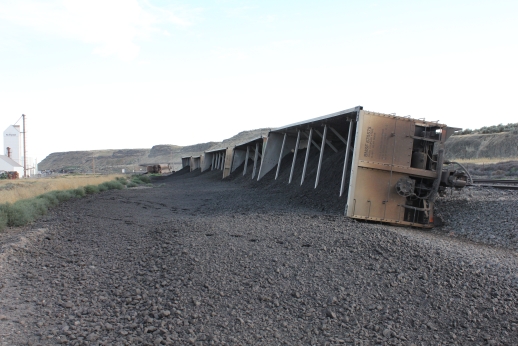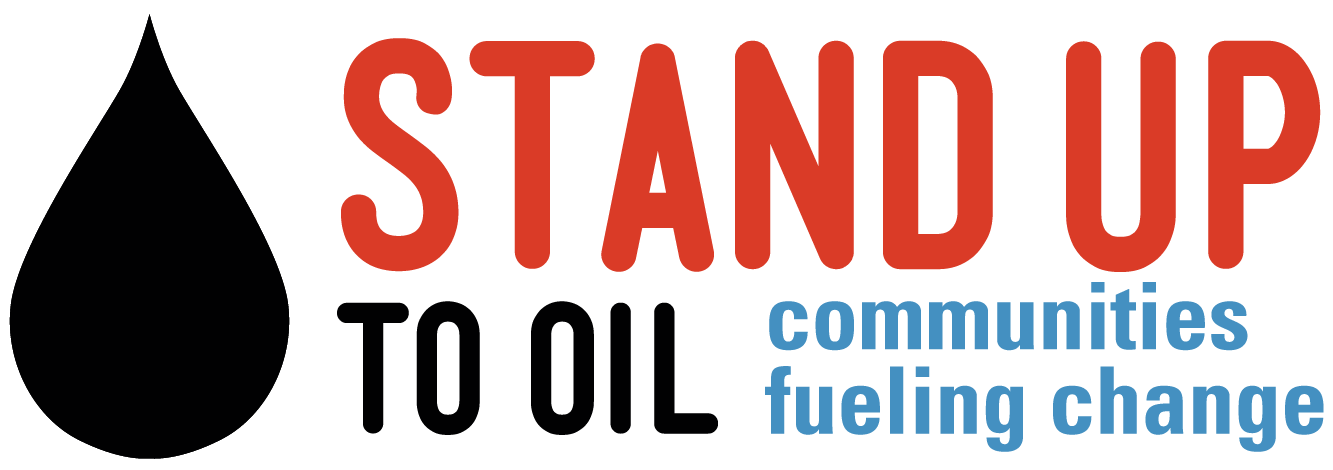FOR IMMEDIATE RELEASE
November 29, 2018
Contact:
Regna Merritt, Oregon Physicians for Social Responsibility,
Co-Director Power Past Coal, regna@oregonpsr.org 971.235.7643
Final County study released: Reaffirms negative health and safety impacts of Longview coal export terminal
KELSO, WASHINGTON – Concluding a three-year process, Cowlitz County officials will hold an Open House on November 29 to release its final Health Impact Assessment (HIA). The report demonstrates the serious adverse public health impacts of the proposed Millennium Bulk Terminals project in Longview, Washington. The focus of the HIA is on neighborhoods near the proposed terminal and facilities along the BNSF line in Cowlitz County. The document underscores the potential negative impacts to communities already experiencing significant health disparities.
Approximately 3,000 health professionals and public health advocates requested that the HIA Steering Committee recommend that the coal project not go forward. The majority of the HIA Steering Committee found that “ there is very little that could realistically be done to prevent harm to health and safety should the proposed terminal be approved. A majority of the Steering Committee members do not support the project and recommend the proposed terminal project not go forward.” (HIA, p. 21)
The HIA understates some threats but provides very valuable information about current state of health in Cowlitz County and provides recommendations for the future. http://www.co.cowlitz.wa.us/index.aspx?NID=2333
Baseline Health (p. 58)
- Some neighborhoods had more than double the mortality (death) rate from chronic lower respiratory diseases compared to the state average.
- Some neighborhoods and Cowlitz County as a whole had statistically significantly higher mortality rates from heart disease compared to the state average.
- No neighborhood had a disease rate or mortality rate that was statistically significantly lower than the state average for any condition assessed in the HIA.
Air Pollution
- Increased cancer rates in communities near the rail line. (pp. 27, 28 )
- Overlapping effects of coal dust and diesel particulate matter (DPM) exposure can lead to death, hospitalization from heart and lung disease, asthma attacks, pneumonia, decline in lung function, asthma in children, plus growing evidence of stroke, Type 2 diabetes, neurological and cognitive impairment, and pre-term and low-birth weight babies. (p. 24)
- People most likely to experience negative health impacts from degraded air quality caused by the terminal are infants, children, pregnant women, stroke survivors, and those who have already experienced health conditions such as heart and lung disease, respiratory infections and diabetes. (p. 6)
- Cowlitz County residents already experience higher rates of death and hospitalization related to air pollution than the WA state average. (p. 25)
- Environmental justice issues exist when a new source of air pollution threatens a community already experiencing health disparities. (p. 25)
Noise Pollution
- Cowlitz County and the neighborhoods that would be most impacted by increased noise and vibration already experience higher than average rates of heart disease, obesity, diabetes, reproductive problems in men and women, high blood pressure in children and impacts on test scores in schools. (p. 8)
- Research suggests that increased noise would contribute to increased mortality rates. (p. 45)
Delayed Emergency Response
- An average of 16 trains each day (480 trains monthly) would travel to and from the proposed terminal. These trains would increase wait times for emergency response vehicles at each crossing. Forecast traffic level of service would drop below “D” at 3 at-grade crossings in the study area. (pp. 41, 42)
Water Pollution and Toxins
- Operations of the proposed terminal would likely increase polyaromatic hydrocarbons (PAHs) in the local environment. PAHs are linked to skin, lung, bladder, liver and stomach cancers. (p. 8)
- A small number of people could be exposed to PAHs by consuming freshwater shellfish contaminated by PAHs from terminal operations. (p. 46)
Degraded Recreation and Community Assets
- Bicyclists and pedestrians could have 8-10 minute delay at at-grade crossings. Vehicles waiting at crossings could spill over into intersections and reduce or block visibility of pedestrians and cyclists. (p. 41)
- Train horns could be a disincentive for recreation at Archie Anderson Park, Highlands Trail, Gerhart Gardens, all of which are 1000 ft from Reynolds Lead rail line. (p. 42)
- See parks, daycares, K-12, hospitals, assisted living, fire stations in study area (p. 42)
Increased Risk to Climate
- Greenhouse gases (GHG) generated by the proposed terminal would be 51.75 million metric tons of carbon dioxide equivalent between 2018 and 2038 – roughly the same as operating 552,000 more cars per year for that same time. (p. 7)
- Rising GHG drive higher temperatures, more acreage burned in wildfires, declines in snowpack, increased flood risk, and sea level rise that endanger the health and well-being of WA residents. (p. 8)
Background:
If this project were approved, 1.3-mile-long trains would move 44 million tons of coal from the Powder River Basin and the Uinta Basin to Longview, WA each year. Sixteen uncovered coal trains would move in and out of Longview each day. Coal would be stored on the banks of the Columbia River in uncovered piles 8 stories high and 40 football fields wide.
Underscoring threats to human health and safety, the Washington Department of Ecology denied a key water quality permit in 2017. The Washington State Department of Natural Resources denied two permits in 2017. Two more permits were denied in November, 2017 by the Shorelines Hearing Examiner, who cited multiple unavoidable impacts to public health, safety and tribal fishing resources that cannot be mitigated.
Unavoidable, significant, adverse impacts that can’t be reasonably mitigated and were identified in state and local permit denials include: increased cancer rates, increased noise and traffic, delayed emergency response times, disproportionate impacts to minority and low income communities, increased risk to local and statewide rail capacity, increased risk of train accidents, increased risk to tribal fishing rights, increased risk of significant vessel incidents (fires, explosions, collisions, etc.), and increased climate pollution.
#######
Power Past Coal is an ever-growing alliance of health, environmental, clean-energy, faith and community groups and businesses working to stop coal export off the West Coast. Powerpastcoal.org @powerpastcoal


